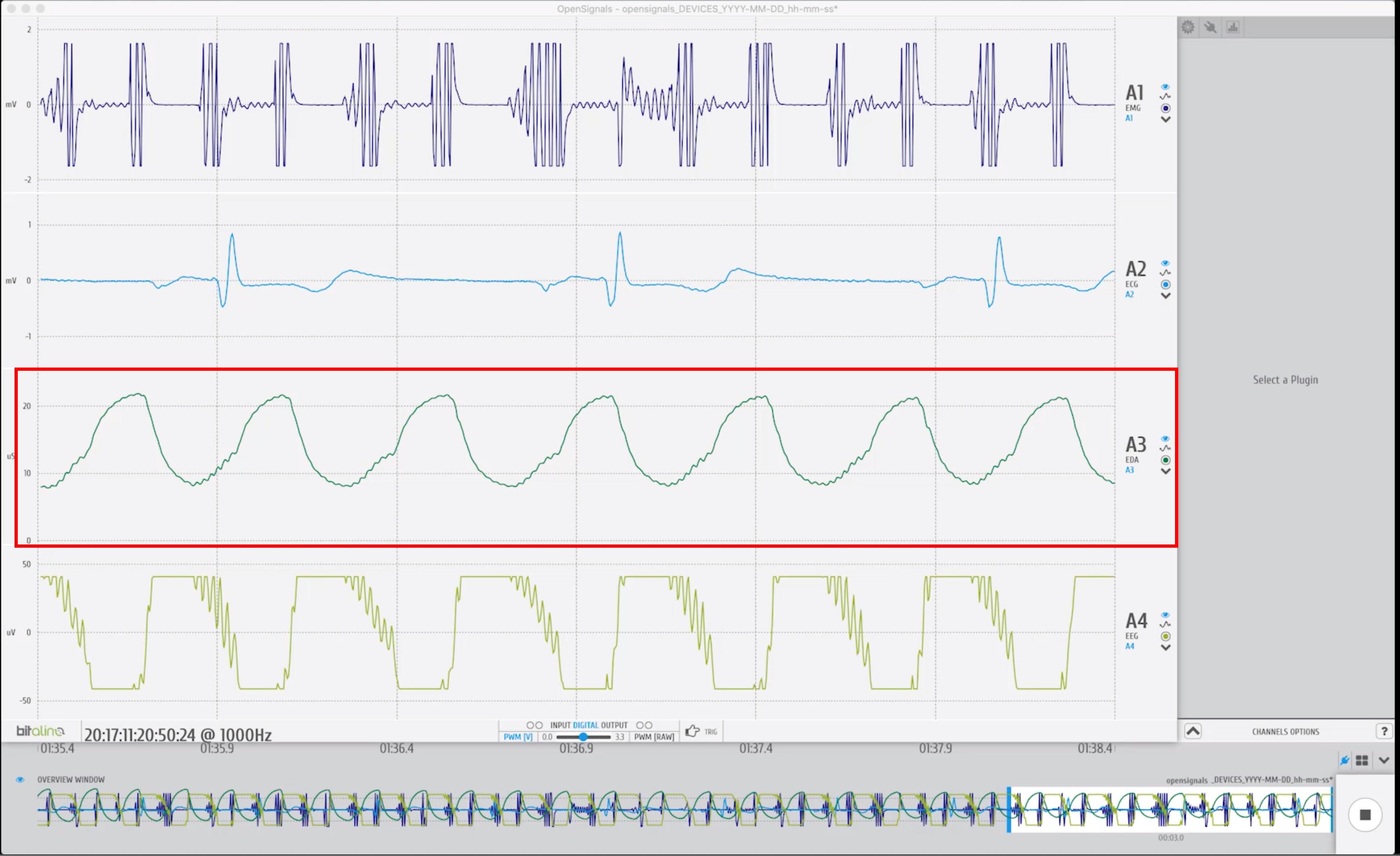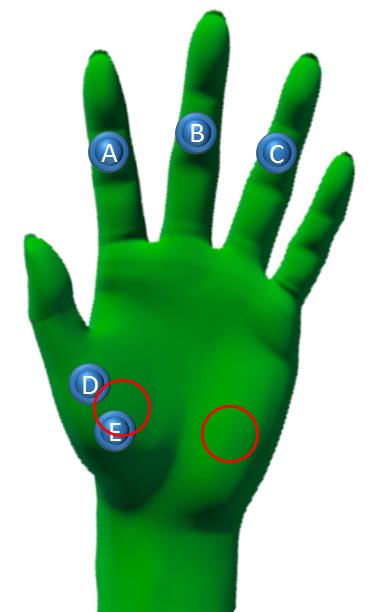Wednesday, October 09, 2019

Moving on to the EDA (Electrodermal Activity aka Galvanic Skin Response) sensor. Again there is a similar range of possible reasons for the results seen above, including
- Incorrect wiring
- Poor electrode contact
- Electromagnetic interference
- Bad sensor placement
- Faulty components
- Bluetooth issues
- Badly written software
In order to isolate the problem I remove the other sensors and try adjusting the electrode positions - I find there is conflicting advice as to where the best placement is; most diagrams look like this where the recommended positions are in the blue circles. But in a couple of videos the recommendation is where I have shown the red circles. And indeed in my tests this seems to produce better results.

I also find that unlike the other sensors I’m working with it’s not a good idea to clean the area with an alcohol wipe before applying the sensor as this dries out the skin. So here’s a video showing what happens when I jab myself in the hand with a pair of scissors! Interestingly the value rises before I actually jab myself.
Finally the EMG sensor data is looking very strange so I repeat the same procedure.. isolate the sensor first and also I’ll try on a bigger muscle - forearm - before I try to attach to my Corrugator which is what I ultimately want. The results are good with clear spikes of activity when I flex the muscle. I move the anode and cathode to the corrugator muscle but leave the reference electrode on my elbow. Again I get a good clear signal when frowning.
I have no idea why the results of the multiple sensor test were so poor, probably a combination of reasons, but now I can retry the test in the knowledge that individually each of the sensors is able to give good results and armed with the knowledge of the optimal setup for each one.